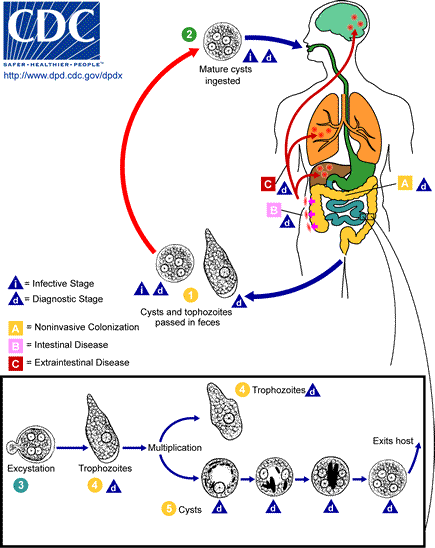Berkas:Entamoeba histolytica Amebiasis LifeCycle.gif
Entamoeba_histolytica_Amebiasis_LifeCycle.gif (435 × 548 piksel, ukuran berkas: 28 KB, tipe MIME: image/gif, 0,2 d)
Riwayat berkas
Klik pada tanggal/waktu untuk melihat berkas ini pada saat tersebut.
| Tanggal/Waktu | Miniatur | Dimensi | Pengguna | Komentar | |
|---|---|---|---|---|---|
| terkini | 29 April 2006 14.26 |  | 435 × 548 (28 KB) | Patho | {{Information| |Description= Amebiasis [Entamoeba histolytica] Life Cycle of Entamoeba histolytica Cysts and trophozoites are passed in feces . Cysts are typically found in formed stool, whereas trophozoites are typically found in diarrheal stool. |
Penggunaan berkas
Halaman berikut menggunakan berkas ini:
Penggunaan berkas global
Wiki lain berikut menggunakan berkas ini:
- Penggunaan pada cs.wikipedia.org
- Penggunaan pada da.wikipedia.org
- Penggunaan pada de.wikibooks.org
- Penggunaan pada he.wikipedia.org
- Penggunaan pada hu.wikipedia.org
- Penggunaan pada pt.wikipedia.org
- Penggunaan pada sv.wikipedia.org


